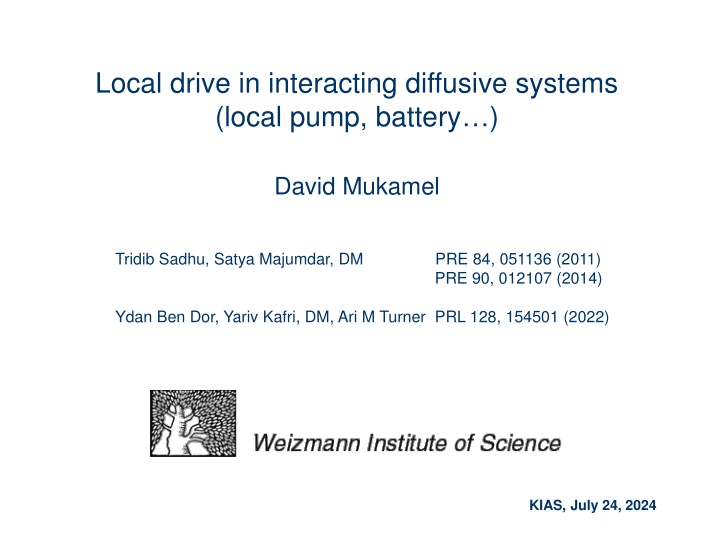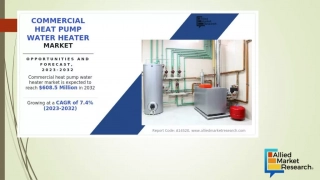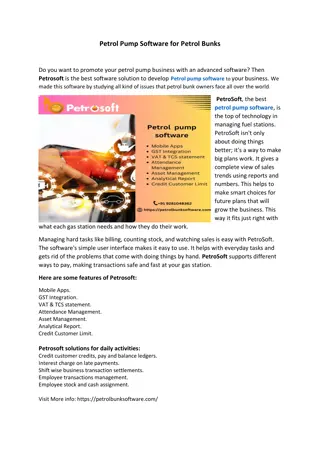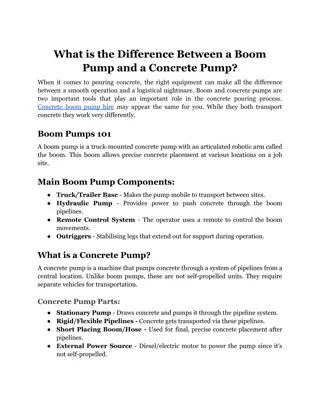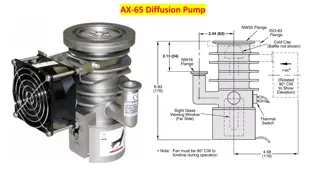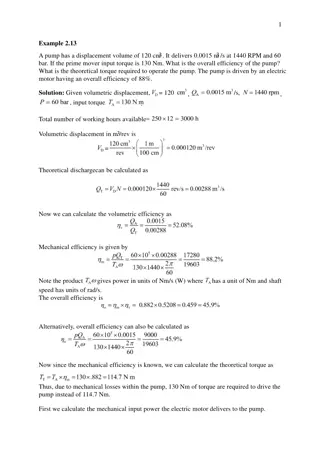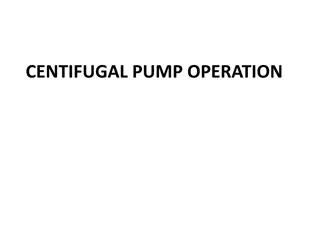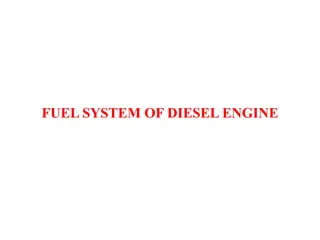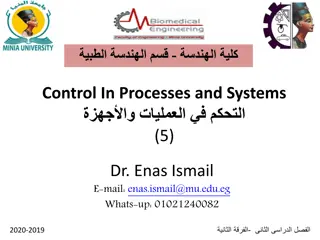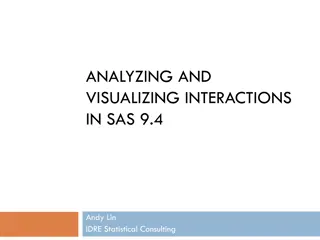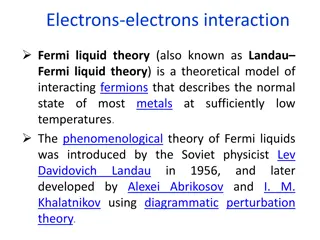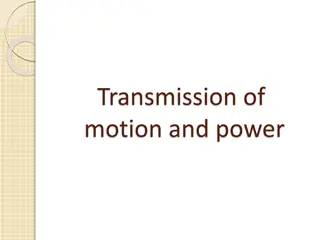Local Drive in Interacting Diffusive Systems: Effects of a Pump on Steady State Properties
Driven systems exhibit long-range correlations in their steady state, contrasting equilibrium systems where particles are only locally correlated. This discussion focuses on the impact of a local drive (pump) in a diffusive fluid on its steady state properties, particularly at criticality. The study reveals non-local density profiles generated by the drive and highlights similarities between the density profiles of pumped systems and equilibrium fluids. The analysis extends to criticality and explores behavior changes at varying distances.
Download Presentation

Please find below an Image/Link to download the presentation.
The content on the website is provided AS IS for your information and personal use only. It may not be sold, licensed, or shared on other websites without obtaining consent from the author.If you encounter any issues during the download, it is possible that the publisher has removed the file from their server.
You are allowed to download the files provided on this website for personal or commercial use, subject to the condition that they are used lawfully. All files are the property of their respective owners.
The content on the website is provided AS IS for your information and personal use only. It may not be sold, licensed, or shared on other websites without obtaining consent from the author.
E N D
Presentation Transcript
Local drive in interacting diffusive systems (local pump, battery ) David Mukamel Tridib Sadhu, Satya Majumdar, DM PRE 84, 051136 (2011) PRE 90, 012107 (2014) Ydan Ben Dor, Yariv Kafri, DM, Ari M Turner PRL 128, 154501 (2022) KIAS, July 24, 2024
Typically, driven systems show long-range correlations in their steady state. This is unlike systems in equilibrium where particles are correlated only locally (except at a critical point). Will discuss the effect of a local drive (a pump) in a diffusive fluid on the steady state properties of the fluid. In particular: how does a pump affect the steady state at criticality where two mechanisms for long-range effects are present.
Possible realizations 2? colloidal gas locally pumped by an optical tweezer e.g. Roichman et al PRE 90, 042302 (2014) From Tamir Admon, PhD thesis (TAU 2020) Active systems where asymmetric objects placed in the fluid act as local pumps. Granek, Baek, Kafri, Solon JSTAT 063211 (2020)
Main results The drive generates a non local density profile in the form of a ? ? dipolar potential: ? ?0 ??in dimension ?. The density-density correlation is long ranged, decaying at large distance as a quadrupolar potential in 2? dimensions 1 ? ?,? = ???? ?? ?? ?2+ ?2 ?
We show that the density profile of the system with a pump is the same as that of an equilibrium fluid in some particular external potential. local drive external potential ?(?) equilibrium nonequilibrium Same steady-state density profile
This correspondence allows one to analyze the density profile even for a fluid at criticality. At criticality the density profile can be expressed in terms of the equilibrium critical exponents of the fluid. Interesting crossover to a different behavior takes place at ? ? in ? = 2,3 dimensions.
In particular at criticality and at large distances ? ? 1/? ? ? ?? ?(?) ?0 = 15 , 4.79 (? = 2,3) In ? = 2,3 there is a crossover to a different behavior at short distance ? ? ? ? ?? 2+? ?(?) ?0 1 ? ? ? ?? 2+? ? ? ?? ? 0
The steady state current profile is independent of temperature and it has the form of dipolar electric field above, at and below criticality. ? 1 ??[ ?1 ? ?1 ? ? ] + ?(1 ? ? = ?3) ?2 2?
Outline Local drive in exclusion model (SSEP) Use the exclusion model to calculate the large distance density correlation induced by the drive. Apply model B dynamics to calculate the density profile at arbitrary temperature, in particular at criticality.
Lattice gas model (SSEP) Particles diffusing on a grid (with exclusion) occupation number ??= 0,1 1 N particles V sites ??= ?? ??? ?,? = ?2? ?,? in the steady state ? ? = ?/?
Effect of a local drive: a single driving bond 1 1 1 1 1 ? 1 0 1 + ?
The resulting dynamical equations: non-interacting particles ??= 0,1 1 ? ??? = ??(?) 1 0 1 + ? ??? ?,? = ?2? ?,? + ?(?0+ ?1)[? ?,0 ? ?,?1]
In the steady state (e.g. in 2?) ?2? ?,? = ?[? ?,0 ? ?,?1] with ? = ?(?0+ ?1) ? = 2? ? where by symmetry: ? ?1 ? ?2+ ?(1 Thus ? ? = ? dipolar potential ?2) 2?
The resulting dynamical equations: with exclusion ??= 0,1 1 ? ??? = ??(?) 1 0 1 + ? ??? ?,? = ?2? ?,? + ?(?0+ ?1 2 ?0?1)[? ?,0 ? ?,?1]
In the steady state (e.g. in 2?) ?2? ?,? = ?[? ?,0 ? ?,?1] with ? = ?(?0+ ?1 2 ?0?1) ? ?1 ? ?2+ ?(1 and thus dipolar potential ? ? = ?0 ?2) 2? Note: the dipole strength involves the correlation ?0?1. It may be calculated perturbatively in small ? which to leading order ? = 2 ? ? (1 ?)
The current ?( ?) ??( ?) ? 1 ?2[ ?1 2 ?1 ? ? ] + ?(1 ? ? = ?3) ?2 2? dipolar electric field
Simulation results Simulation on a 200 200 lattice with ? = 0.6 For the interacting case the strength of the dipole was measured separately .
Two-point correlation function ? ?,? =< ? ? ? ? >- ?(r) ?(?) In d=1 dimension, in the hydrodynamic limit ???,? =1 ?g(? ?, ? ?) ? T. Bodineau, B. Derrida, J.L. Lebowitz, JSP, 140 648 (2010).
In higher dimensions local currents do not vanish for large L and the correlation function does not vanish in this limit.
Steady state ? ?,? =< ? ? ? ? >- ?(r) ?(?) For r ?,? 1 ??(?,?) ?? = ?? ?,? + ??(?,?) ?(?,?) corresponds to an electrostatic potential in 2? induced by ? ?+ ?? ?,? = ? ?,?
The charge distribution can be shown to have the form of a local quadrupole (either using particle hole symmetry at density ? = 0.5 or to second order in the drive ? otherwise. ?(?,?)~1/ ?2+ ?2 ? quadrupole potential in 2? dimensions
Local pump in an interacting fluid at arbitrary temperature Model B dynamics ? 2 ??2+? 2?2+? ?0= ??? 4?4 Model B dynamics: conserving density ??0 ??(?) Chemical potential: ?0(?) = ? mobility ?0= ???0 ? = ?0+ ? ???? + ? ? - noise ?? ??= ??
Averaging over the noise: ? = ?0 + ? ???? ?0 = ?? ?0 ? ? ?? ???? = ??2?0 ?? ???? In the steady state: ?2?0 = ? is thus a potential of an electric dipole ?0 ? ? ?? 1 ?? ?0 =
The current ? ? ? ? ?2 ? ?? 1 ?? ? ?0 = ?? ?0 = dipolar electric field ? = ?0 + ? ???? The form of the current is thus independent of the temperature and its amplitude decays as 1/??at large distance.
Steady state density profile ???? ?2?0 = ? It is instructive to note that this equation can be derived as the equilibrium steady state of a model with an ordering field ? ? ?? 1 ?? ? = (?) ? ? ?? 1 Equilibrium with a field h = Nonequilibrium local drive ???? ?? ? = ? ???? ??? ?,? ?
This representation has tremendous advantage One can use whatever is known on equilibrium steady state to study the locally driven system. Great numerical advantage since in equilibrium the steady state is independent of the dynamics, and more efficient dynamics e.g. cluster Wolff algorithm may be applied for its analysis. This is particularly useful at criticality where local dynamics is slow.
The equivalence between the two problems can be seen as follows: ???? ?2?0 = ? ?0 = ??2? + ? ? + ? ?3 Helmholtz decomposition ???? = ? + ? - scalar field and ? ? = 0 ???? ?2 ? = ? Thus ? is a dipolar potential ? ? ?? 1 ?? Resulting in: ? =
Thus the steady-state equation ???? ?2?0 = ? can be written as: ? ? ?? 1 ?? ? = with ?2?0 ?2 ? = 0 This is the steady state equation of a system at equilibrium with free energy ? = ?0 ??? ? ?(?)
? = ?0 ??? ? ?(?) ? =??(? ? ) = ?0 (?) ?? ? = ?? In the steady state ?? ??= ?? = ?2? = 0 ?2?0 ?2 ? = 0 ? =??(? ? ) = ?0 (?) ?? The steady state is independent of the dynamics. One can thus apply faster non-conserving dynamics or cluster algorithms to study it.
(?) ? ? ?? 1 Equilibrium with a field h = Nonequilibrium local drive ???? ??
Steady state profile ??2? + ? ? + ? ?3 ? = 0 ? ? ?? 1 ?? ? = Paramagnetic phase ( > 0): The ? and ? terms may be neglected ? ? ?? 1 ?(?) = ??? dipolar potential as found for the hard core gas.
? = 2?? cos(?) ? = 512, ? = 0.35?
At criticality ? = 0 : ? ? ?? 1 ?? ? 1 ?(2 ?) ? = ? = The field ? takes the system off criticality (?) ?(?) ? There are two regimes: ? ? and ? ?
(?) For ? ? ?(?) ? ? is basically constant on a length scale ? around ? ? ? ?? 1 ?? ? = 1 ? ? ? ?? ???( ? ?) ?(?)
Angular dependence of the density in 2? ? = 2?? ? = ?? cos ?1/15 cos(?) ? = 0.35? > ? ? = 512,
? ? Linear response: ?(?) = ??? ? ? ? (? ) ? ? ?? 1 1 ?? with and ? = ? ? ?? 2+? ? ? ?? 2+? ?(?)
? = 2?? ? = ?? cos(?) cos(?) ? = 0.35? < ? ? = 512,
Crossover distance ? ? ? ?? 1 ?? ? 1 ?(2 ?) ? = ? = ? 1 ?(2 ?) ? ? = ? (? 1) ? + 1 ? + 1 ? ? ?? Thus ? = ? = 8 ? = 2 ? = 2.08 (? = 3) 7 ? < 0 for ? = 2,3 and hence ? diverges at small ?
1 ? ? ? ?? 2+? ? ? ?? ? 0 ? = 2 ? = 15 ? = 0.25 ? = 3 ? = 4.79 ? = .036 ? ?? Note: in ? = 2 the density increases with ? in the linear regime
? = 2?? ? = 0.5?? ? = 0.35? f=0.03 f=100 f=1 2? density plots
Profiles in ? = 0 plane Angular dependence at ? = .28? (cos?)2.09 ???? Radial dependence along the pump Density plots in 3d L=64.
? = 0.9?? ?~1 ? = 2?? ?2at all ? Current streamlines and decay in 2?, ? = 64
Summary Local drive in a fluid generates a non local density profile in the form ? ? ??in dimension ? of a dipolar potential: ? ?0 The density-density correlation is long ranged, decaying at large distance as a quadrupolar potential in 2? dimensions 1 ? ?,? = ???? ?? ?? ?2+ ?2 ? The density profile of the locally driven system is equivalent to that of equilibrium non-driven system in a dipolar field. As a result the non-equilibrium density profile can be expressed in terms of the equilibrium critical exponent of the fluid.
